Egyptian Mystery Schools
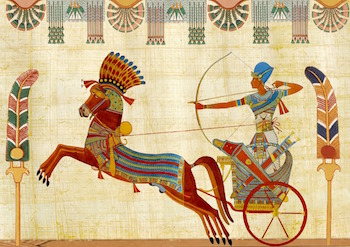
In the time of the Ramses (c. 1300 B.C.E.), Egypt shone as a beacon light of civilization throughout the known world, and while the leaders of foreign nations sought to barter for the empire's rich produce in order to avert local famines and to make treaties with pharaoh in order to avert his military might, seekers of the divine sciences came from the distant shores of Asia Minor and Greece to study in the sanctuaries with magi and hierophants who they believed could give them the secrets of immortality.
The students who would be initiates of the mystery schools were well aware that they must undertake the rigors of disciplined study and the training of body, soul, and spirit. They had heard from former initiates that in order to attain the mastery demanded by the priests of the mysteries that the newcomers would undergo a complete restructuring of their physical, moral, and spiritual being.
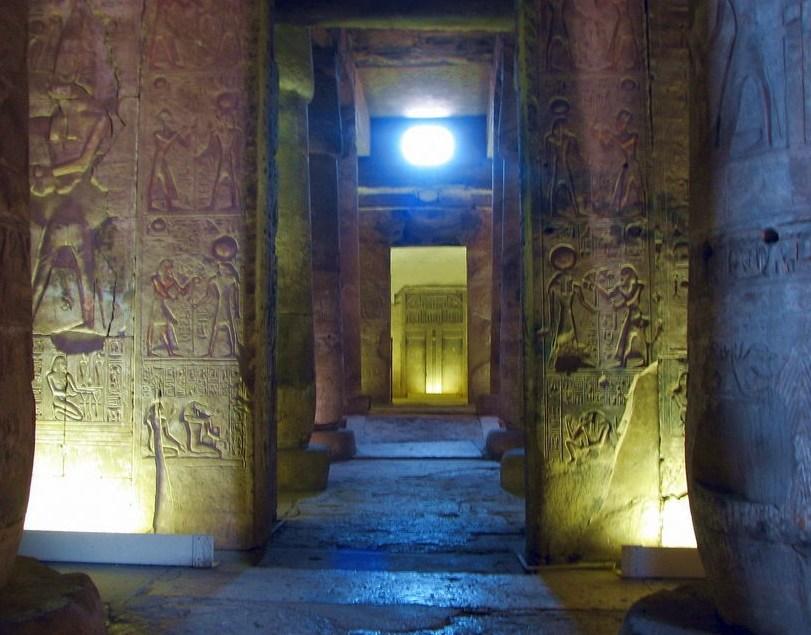
According to the credo of the mysteries, only by developing one's faculties of will, intuition, and reason to an extra-ordinary degree could one ever gain access to the hidden forces in the universe. Only through complete mastery of body, soul, and spirit could one see beyond death and perceive the pathways to be taken in the afterlife. Only when one has conquered fate and acquired divine freedom could he or she, the initiate, become a seer, a magician, an initiator.
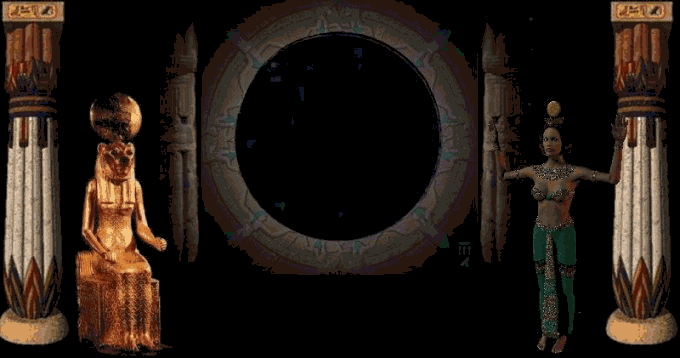
The Mystery Schools of the Order of Melchizedek
The Order of Melchizedek is known as the one true Spiritual Priesthood. I use “is” because the Order spans lifetimes and centuries It is timeless—eternal. They are the Cosmic Priests to the priests—evolved beings who have dedicated themselves to the work of promoting spiritual growth wherever it is possible. They exist through every dimension and upon every sacred planet. Melchizedek was the first priest mentioned in the Old Testament of the Bible. (Genesis 14:18-20) Melchizedek is mentioned again in the New Testament book of Hebrews as the oldest priest of a higher order, more ancient and direct from God, than the Children of Israel (the Levite) priesthood. This means that Melchizedek predates the Levite priesthood.
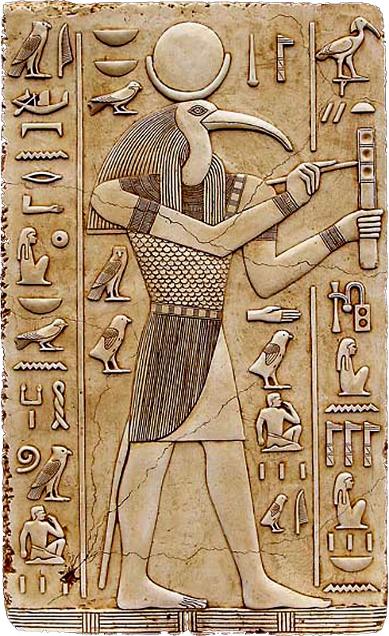
The mysterious Melchizedek, who is said to have “no origins, nor parents,” is frequently described as the “King of Righteousness” (meaning the right use of consciousness). Other references to Melchizedek refer to him as “the Priest of the most high God” who met with Abraham as he returned from his battles. Melchizedek received Abraham’s tithes and gave him bread and wine, foreshadowing the communion ritual later established by Jesus. Melchizedek is discussed at some length in Chapters 5-7 of Paul’s Epistle to the Hebrews. Here, Jesus is repeatedly referred to as a “High Priest of the Order of Melchizedek.”
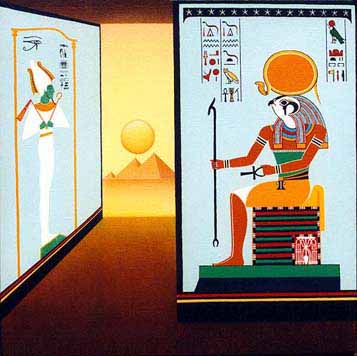
It is believed that part of Jesus’ mission was to re-establish the planetary Priesthood of Melchizedek on earth. It is said that all the earth’s great spiritual traditions, mystery schools and religions, were all seeded by the same fundamental principles or Laws of God translated through the Melchizedek Consciousness.
Is it any wonder that for centuries people have been asking—just who is this Melchizedek and where did he come from? From what I’ve learned, the spirit known as Melchizedek came to the Earth before it was truly formed. While the nature of this human experiment was still being shaped by the Elohim (the angels or some translate that to mean star beings), these beings took it upon themselves to attempt combining free will and spiritual awareness within the physical human realm.
When spirits began to descend into physical bodies, beginning with that society we now call Lemuria, the spirit of Melchizedek began to incarnate and offer guidance to these beings who through experimentation with free will, often became trapped in physical form and illusion. (These are the early creation stories, where there existed half men, half animal/beast entities.) As the experience of Lemuria reached an end and it was necessary to descend further into the physical realm, what we know as Atlantis began and Melchizedek’s work shifted to that area.
The violent end of Atlantis caused a serious disruption in the natural descent and plunged humanity deeper into the physical without any conscious connection to its spiritual nature. This situation called for some sort of drastic action. The spirit of Melchizedek finally arrived at a plan to restore self-awareness and spiritual growth with the help of many other advanced spiritual beings. For this end, the Egyptian mystery schools were established.
The goal of these schools was to elevate individuals into that awareness that has come to be known as Christ Consciousness. Many of those achieving Christ Consciousness stayed in Egypt to carry on the work there, and Melchizedek temples were set up for the purpose of teaching dedicated initiates how to unfold their spiritual gifts. The ultimate purpose was to help their brothers and sisters to freedom. No matter what ideology or religion, every ascended master, avatar or sage must go through the Melchizedek initiations, whether in a temple or in the inner dimensional planes.

The Egyptians Educated The Greeks
The Greek philosopher Pythagoras (c. 580– c. 500 B.C.E.) learned the secret doctrine of numbers, the heliocentric system of the universe, music, astrology, astronomy, mathematics, and geometry from the powerful Egyptian Magi. Before he established his own school of philosophy in southern Italy, Pythagoras spent 22 years in the temples of Egypt as an initiate in the ancient mysteries.
And if there was a motive, what else could it have been but that Alexander wanted the wealth in books, gold, silver, ivory, slaves, and tribute which the Persians were extorting from the unfortunate Egyptians? In ancient times, the Oracle of Ammon at Siwah was the most celebrated, and Heliopolis, Memphis and Thebes were representatives of the best of Egyptian culture. (John Kendrick's Ancient Egypt Book II P. 433–435; Diodorus 15, 16. Herodotus Book III P. 124; Diogenes Laertius Book VIII; Timaeus of Plato; Pliny N. H. XXXVI 9; Antiphon recorded by Porphyry). Next: Chapter V: The Pre-Socratic Philosophers and the Teachings
1. The Effects of the Persian Conquest. A. Immigration restrictions against the Greeks are removed and Egypt is thrown open to Greek research. Owing to the practice of piracy, in which the Ionians and Carians were active, the Egyptians were forced to make immigration laws restricting the immigration of the Greeks and punishing their infringement by capital punishment, i.e., the sacrifice of the victim. Before the time of Psammitichus, the Greeks were not allowed to go beyond the coast of Lower Egypt, but during his reign and that of Amasis, those conditions were modified. For the first time in Egyptian history Ionians and Carians were employed as Mercenaries in the Egyptian Army (670 B.C.), interpretation was organized through a body of interpreters, and the Greeks began to gain useful information concerning the culture of the Egyptians.
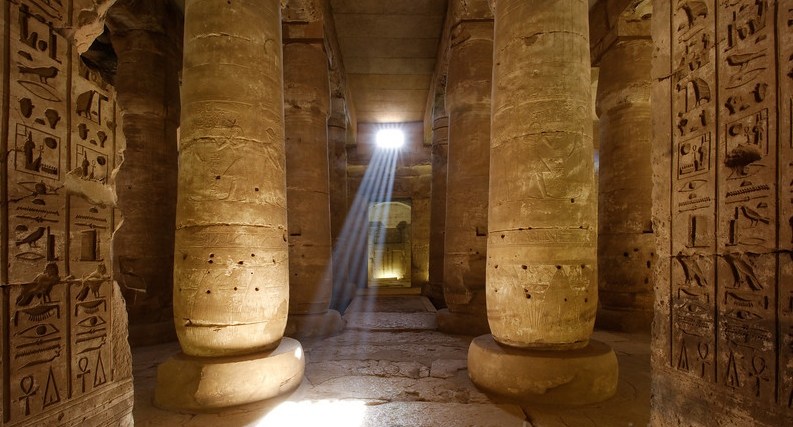
In addition to these changes, King Amasis removed the restrictions against the Greeks and permitted them to enter Egypt and settle in Naucratis. About this same time, i.e., the reign of Amasis, the Persians, through Cambyses invaded Egypt, and the whole country was thrown open to the researches of the Greeks. B. The Genesis of Greek Enlightenment. The Persian invasion, did not only provide the Greeks with ample research, but stimulated the creation of prose history in Ionia. Heretofore, the Greeks had little or no accurate knowledge of Egyptian culture: but their contact with Egypt resulted in the genesis of their enlightenment. (Ovid Fasti III 338; Herodotus Bk. II p. 113; Plutarch p. 380; Eratosthenes ap Strabo 801–802; Diogenes Bk. IX 49). p. 42 C. Students from Ionia and the Islands of the Aegean visit Egypt for their Education.
Just as in our modern times, countries like the United States, England, and France are attracting students from all parts of the world, on account of their leadership in culture; so was it in ancient times, Egypt was supreme in the leadership of civilization, and students from all parts, flocked to that land, seeking admission into her mysteries or wisdom system. The immigration of Greeks to Egypt for the purpose of their education, began as a result of the Persian invasion (525 B.C.), and continued until the Greeks gained possession of that land and access to the Royal Library, through the conquest of Alexander the Great. Alexandria was converted into a Greek city, a centre of research and the capital of the newly created Greek empire, under the rule of Ptolemies.
Egyptian culture survived and flourished, under the name and control of the Greeks, until the edicts of Theodosius in the 4th century A.D., and that of Justinian in the 6th century A.D., which closed the Mystery Temples and Schools, as elsewhere mentioned. (Ancient Egypt by John Kendrick Bk. II p. 55; Sandford's Mediterranean World p. 562; 570). Concerning the fact that Egypt was the greatest education centre of the ancient world which was also visited by the Greeks, reference must again be made to Plato in the Timaeus who tells us that Greek aspirants to wisdom visited Egypt for initiation, and that the priests of Sais used to refer to them as children in the Mysteries.
As regards the visit of Greek students to Egypt for the purpose of their education, the following are mentioned simply to establish the fact that Egypt was regarded as the educational centre of the ancient world and that like the Jews, the Greeks also visited Egypt and received their education. (1) It is said that during the reign of Amasis, Thales who is said to have been born about 585 B.C., visited Egypt and was initiated by the Egyptian Priests into the Mystery System and science of the Egyptians. We are also told that during his residence p. 43 in Egypt, he learnt astronomy, land surveying, mensuration, engineering and Egyptian Theology. (See Thales in Blackwell's source book of Philosophy; Zeller's Hist. of Phil.; Diogenes Laertius and Kendrick's Ancient Egypt). (2) It is said that Pythagoras, a native of Samos, travelled frequently to Egypt for the purpose of his education.
Like every aspirant, he had to secure the consent and favour of the Priests, and we are informed by Diogenes that a friendship existed between Polycrates of Samos and Amasis King of Egypt, that Polycrates gave Pythagoras letters of introduction to the King, who secured for him an introduction to the Priests; first to the Priest of Heliopolis, then to the Priest of Memphis, and lastly to the Priests of Thebes, to each of whom Pythagoras gave a silver goblet. (Herodotus Bk. III 124; Diogenes VIII 3; Pliny N. H., 36, 9; Antipho recorded by Porphyry). We are also further informed through Herodotus, Jablonsk and Pliny, that after severe trials, including circumcision, had been imposed upon him by the Egyptian Priests, he was finally initiated into all their secrets. Cicero de Natura Deorum III, 36).
That he learnt the doctrine of metempsychosis; of which there was no trace before in the Greek religion; that his knowledge of medicine and strict system of dietetic rules, distinguished him as a product of Egypt, where medicine had attained its highest perfection; and that his attainments in geometry corresponded with the ascertained fact that Egypt was the birth place of that Science. In addition we have the statements of Plutarch, Demetrius and Antisthenes that Pythagoras founded the Science of Mathematics among the Greeks, and that he sacrificed to the Muses, when the Priests explained to him the properties of the right angled triangle. (Philarch de Repugn. Stoic 2 p. 1089; Demetrius; Antisthenes;
Pythagoras was also trained in music by the Egyptian priests. (Kendrick's Hist. of Ancient Egypt vol. I. p. 234). (3) According to Diogenes Laertius and Herodotus, Democritus is said to have been born about 400 B.C. and to p. 44 have been a native of Abdera in Miletus. We are also told by Demetrius in his treatise on "People of the Same Name", and by Antisthenes in his treatise on "Succession", that Democritus travelled to Egypt for the purpose of his education and received the instruction of the Priests. We also learn from Diogenes and Herodotus that he spent five years under the instruction of the Egyptian Priests and that after the completion of his education, he wrote a treatise on the sacred characters of Meroe.
In this respect we further learn from Origen, that circumcision was compulsory, and one of the necessary conditions of initiation to a knowledge of the hieroglyphics and sciences of the Egyptians, and it is obvious that Democritus, in order to obtain such knowledge, must have submitted also to that rite. Origen, who was a native of Egypt wrote as follows:— "Apud Aegyptios nullus aut geometrica studebat, aut astronomiae secreta remabatur, nisi circumcisione suscepta." (No one among the Egyptians, either studied geometry, or investigated the secrets of Astronomy, unless circumcision had been undertaken). (4) Concerning Plato's travels we are told by Hermodorus that at the age of 28 Plato visited Euclid at Megara in company with other pupils of Socrates; and that for the next ten years he visited Cyrene, Italy and finally Egypt, where he received instruction from the Egyptian Priests.
(5) With regards to Socrates and Aristotle and the majority of pre-Socratic philosophers, history seems to be silent on the question of their travelling to Egypt like the few other students here mentioned, for the purpose of their education. It is enough to say, that in this case the exceptions have proved the rule, that ail students, who had the means, went to Egypt to complete their education. The fact that history fails to supply a fuller account of this type of immigration, might be due to some or all of the following reasons: (a) The immigration laws against the Greeks up to the time of King Amasis and the Persian Invasion, (b) Prose p. 45 history was undeveloped among the Greeks during the period of their educational immigration to Egypt.
(c) The Greek authorities persecuted and drove students of philosophy into hiding and consequently, (d) Students of the Mystery System concealed their movements. Let us remember that Anaxagoras was indicted and imprisoned; that he escaped and fled to his home in Ionia, that Socrates was indicted, imprisoned and condemned to death; and that both Plato and Aristotle fled from Athens under great suspicion (William Turner's Hist. of Phil. p. 62; Plato's Phaedo; Zeller's Hist. of Phil. p. 84; 127; Roger's Hist. of Phil. p. 76; William Turner's Hist. of Phil. p. 126). 2. The Effects of the Conquest of Egypt by Alexander the Great. A. The Royal Library and Museum together with Temples and other Libraries are Looted.
As elsewhere mentioned, it was an ancient custom of invading armies to loot libraries and temples in order to capture books and manuscripts, which were regarded as great treasures. A few instances would be enough to verify this custom: (a) we are informed that during the Persian Invasion beginning with Cambyses, the temples of Egypt were not only stripped of their gold and silver, but rifled for their ancient records. Every Egyptian Temple carried a secret library with secret manuscripts and books. (b) We are also informed that when Athens was captured by the Romans in 84 B.C. the library of books said to have belonged to Aristotle was also captured and taken to Rome. (William Turner's Hist. of Phil. p. 128; John Kendrick's Ancient Egypt vol. II p. 432).
Just as in the invasion of Egypt by the Persians, the invading armies stripped the temples of their gold, silver and sacred books; and just as in the capture of Athens by the Romans Sulla carried off the only library of books which he found; so it is to be expected of Alexander the Great, in his invasion of Egypt. One of the first things that he and his companions p. 46 and armies would do, would be to search for the treasures of the land and capture them. These were kept in temples and libraries and consisted of gold and silver out of which the gods and ceremonial vessels were made, and sacred books and, manuscripts kept both in libraries and in the "Holy of Holies" of Temples.
It is my firm belief that this indeed was the great opportunity which Alexander gave Aristotle and enabled him and his pupils to carry off as many books as they wanted from the Royal Library and to convert it into a research centre. Apart from the Royal Library at Alexandria, there was also another famous library near by: The "Royal Library of Thebes"; "The Menephtheion", which was founded by Pharaoh, Setei. The Menephtheion was completed by Rameses II; but little occurs in history about this greatest of Egyptian Royal Libraries. However, any invading army would first loot the Royal Library of Alexandria and then would turn their attention to the Menephtheion at Thebes.
They would also visit the cities of Memphis and Heliopolis and likewise loot their libraries and temples. This was the ancient custom and certainly one of the ways in which the Greeks received their education from Egyptians. (Egyptian Mythology by Max Muller p. 187–189; 205; Diodorus 16, 51; Bunsen I p. 27; Ancient Egypt by John Kendrick vol. II 56; 432–433). It is therefore an erroneous belief that the Greeks, on Egyptian soil, and through their own native ability, set up a great university at Alexandria and turned out great scholars. On the other hand, since it is a well known fact that Egypt was the land of temples and libraries, we can see how comparatively easy it was for the Greeks to strip other Egyptian libraries of their books in order to maintain the new Library at Alexandria, after it had been already looted by Aristotle and his pupils.
The Greeks (i.e., Alexander the Great, Aristotle's school and the succeeding Ptolemies) converted the Royal Library of Alexandria into a research centre, by transferring p. 47 [paragraph continues] Aristotle's school and pupils from Athens to this great Egyptian Library, and therefore the students who studied there received instructions from Egyptian priests and teachers, until they died out. The difficulty of language and interpretation made it imperative for the Greeks to use Egyptian teachers. The Greeks did not carry culture and learning to Egypt, but found it already there, and wisely settled in that country, in order to absorb as much as possible of its culture. B. The Royal Library of Thebes: The Menephtheion is described.
It was also looted by invading armies. But when we read a brief sketch of the magnificence of the Theban Royal Library; The Menephtheion, we even see a better picture and are bound to admit that Egypt was the store house of ancient culture and that that culture was preserved in the form of literature stored away in her great libraries and temples. Great as the Royal Library of Alexandria might have been, we see in the Theban Royal Library something far more magnificent and far more representative of the true greatness of our Ancient Egypt. On the left of the steps leading to the second court, there is still seen the pedestal of the enormous granite statue of Rameses; the largest, that ever existed in Egypt, according to Diodorus. Its height has been calculated at fifty-four feet, and its weight, at 887¼ tons; a marvel to the modern mind.
The interior face of the wall of the pylon represents the wars of Rameses III. The Osiride pillars of the second court, are the monolithal figures, sixteen cubits in height, supplying the place of columns, and at the foot of the steps leading from the court to the next hall beyond, there were two sitting statues of the King. The head of one of these was of red granite, known by the name of "Young Memon", was taken away by Belzoni, and is now a principal ornament of the British Museum.
The interior face of the wall of the pylon represents the wars of Rameses III. The Osiride pillars of the second court, are the monolithal figures, sixteen cubits in height, supplying the place of columns, and at the foot of the steps leading from the court to the next hall beyond, there were two sitting statues of the King. The head of one of these was of red granite, known by the name of "Young Memon", was taken away by Belzoni, and is now a principal ornament of the British Museum.
Beyond this are the remains of a hall 133 feet broad by 100 feet long, supported by 48 columns, twelve of which are p. 48 thirty-two feet in height and 21 feet in circumference. On different parts of the columns, and the walls are represented acts of homage by the king to the principal Deities of the Theban Pantheon, and the gracious promises which they make him in return. In another sculpture the two chief Divinities of Egypt invest him with the emblems of military and civil dominion, i.e., the Scimitar, the Scourge and the Pedum. Beneath, the twenty-three sons of Rameses appear in procession, bearing the emblems of their respective high offices in the state, their names being inscribed above them. Nine smaller apartments, two of them still preserved, and supported by columns, lay behind the hall. On the jambs of the first of these apartments are sculptured Thoth: the Inventor of Letters, and the Goddess Saf, with the title of 'Lady of Letters'; and 'President of the Hall of Books', accompanied the former with an emblem of the sense of sight, and the latter of hearing.
There is no doubt that this is the "Sacred Library" which Diodorus describes as the inscribed "Dispensary of the Mind". It had an astronomical ceiling, in which the twelve Egyptian months are represented, with an inscription from which important inferences have been drawn respecting the chronology of the reign of Rameses III. On the walls is a procession of priests, carrying the Sacred Arts, and in the next apartment, the last that now remains, the king is presenting offerings to the various Divinities. (Ancient Egypt by J. Kendrick Bk. I p. 128–131. Report of French Commission). C. Museum and the Library of Alexander were used as a University.
The Museum and Library of Alexandria were so famous in ancient times, that we wonder why more information concerning this centre of learning, has not come down to us. A few references to authoritative sources might no doubt help to enlighten us on this matter. p. 49 From Sedgwick's and Tyler's History of Science, chapter 5 pages 87–119, we learn that the subjugation of Egypt by Alexander the Great in 330 B.C. had checked the further development of Greek civilization on its native soil. That after the death of Alexander the Great in 323 B.C., his vast empire was divided among his generals, and that Alexandria, the new Egyptian capital fell to Ptolemy. That the city, barely ten years old, soon became the centre of the learned world, and that by 300 B.C., the Museum (i.e., the seat of the Muses), was founded, and became a veritable university of Greek learning. That to the Museum was attached a great library, with a dining hall and lecture rooms for professors, and this became a school of philosophers, mathematicians and astronomers. Here for the next 700 years, science had its chief abiding place.
We would recall how at the end of World War II, the American scientists conferred with the Japanese scientists at Tokio. Accordingly, we are told that Ptolemy I Soter, in p. 50 order to elicit the secrets of Egyptian wisdom or mystery system, ordered Manetho, the High Priest of the temple of Isis at Sebennytus in Lower Egypt, to write the philosophy, and the history of the religion of the Egyptians. Accordingly, Manetho published several volumes concerning these respective fields, and Ptolemy issued an order prohibiting the translation of these books which had to be kept on reserve in the Library, for instruction of the Greeks by the Egyptian Priests.
Here it becomes quite clear that the first professors of the Alexandrine School were the Egyptian Priests, and that the Scholarchs and pupils of Aristotle's transferred school, received their training directly from the Egyptian Priests. It is also well to note that the chief text books of the Alexandrine School were Manetho's books. We are told by Apollodorus from whom Syncellus drew his information, that Ptolemy II ordered Eratosthenes, the Cyrenean (i.e., a black man and native of Cyrene) and librarian of the Alexandrine Library, to write a chronology of the Theban Kings, and that Eratosthenes did so with the aid of the Egyptian Hierophants at Thebes (Ancient Egypt by John Kendrick vol. II p. 81; Apollodorus; Syncellus; Clinton, Fasti Hellenici, sub anno). Furthermore, it became the custom during the Greek and Roman occupation to use the services of Egyptian Priests and Scholars, as professors at the Alexandrine School. We are told that during the reign of Theodosius (378–395 A.D.), the Egyptian Professor Horapollo wrote a system of the Egyptian hieroglyphics: s.
The Hieroglyphica of Horapollo, which has been regarded as the best that has come down to modern times. We are also told that this professor taught not only at the Alexandrine School, but also at that of Constantinople. (John Kendrick's Ancient Egypt Bk. I p. 242; Leeman's Amstelod, 1935 translated by Cory). 3. The Egyptians Were the First to Civilize the Greeks. Greece was first civilized by colonies from Egypt, then from p. 51 [paragraph continues] Phoenicia and Thrace. These were under the government of wise men, who not only subdued the ferocity of an ignorant populace by civil institutions, but also cast about them the strong chain of religion and the fear of the god.
Whatever dogmas they had been taught in their respective countries, concerning things divine and human, they delivered to these newly formed societies, with the object of bringing them under the restraint of virtuous discipline. Phoroneus and Cecrops were Egyptians, Cadmus a Phoenician and Orpheus a Thracian, and each of them, through their colonies carried into Greece the religious and philosophical tenets of his respective country. The practice of teaching the doctrines of religion to people under the guise of myths originated from the Egyptians and was adopted by the Phoenicians and Thracians, and subsequently introduced to the Greeks. According to Strabo, it was not possible in ancient times to lead a promiscuous multitude to religion and virtue by philosophical harangues.
This could be effected only by the aid of superstition, by prodigies and fables. The thunder bolt, the aegis, the trident, the spear, torches and snakes were the instruments made use of by the founders of States, to terrify the ignorant and vulgar into subjection. These references must speak for themselves. Cheops and Cecrops were the names which the Greeks used for the Egyptian Khufu, who belonged to the 4th Dynasty of the Egyptians or the pyramid age, i.e., 2800 B.C. (Strabo Bk. I; Brucker's Historia Critica Philosophiae with translation by Wm. Enfield: Bk. II p. 62). 4. Alexander Visits the Oracle of Ammon in the Oasis of Siwah. No discussion on Alexander's invasion of Egypt would be complete without reference to his famous visit to the Oracle of Ammon, situated in the Oasis of Siwah.
Alexander had placed a garrison in Pelusium, whence he marched through p. 52 the desert along the eastern bank of the Nile to Heliopolis where he crossed the river to Memphis, where his fleet had been awaiting him, and where he was welcomed by the Egyptians and crowned as Pharaoh. Having sacrificed to Apis and other Gods, Alexander descended the Nile by the Canopic branch and set out on his journey to the Oracle of Ammon in the Oasis of Siwah. His route was along the coast of Libya, as far as Paraetonium, whence he marched through the desert to the Oasis of Siwah. What do we suppose was Alexander's motive for visiting the Temple of Ammon? Perhaps a brief description of the religious and economic importance of Heliopolis, Memphis,
Thebes and Ammonium might help us to determine what it was. In the first place these cities were strongholds of the Egyptian religion, where there were many rich temples, schools and Priests, and therefore were representative of the Egyptian religious life. In the second place these cities were centres of education, and after the Persian invasion, Greek students who travelled to Egypt for the purpose of their education, received their training from the Priests of one or all of these cities, as elsewhere mentioned. When Pythagoras went to Egypt, he carried a letter of introduction from Polycrates of Samos to King Amasis, who in turn gave him letters of introduction to the Priests of Heliopolis, Memphis, and Thebes. As centres of education, the temples and libraries of these cities contained very valuable books; and in the third place, these regions had previously been captured by the Persians for the very fact of their wealth.
This should explain why they included these districts in their Satrapy which paid them an enormous annual tribute amounting to 700 talents of gold, together with the produce of the fisheries of Lake Moeris which amounted to a talent a day, during the six months that the water flowed in from the Nile; and a third part of that sum, during the afflux. In addition Egypt furnished 120 thousand medicini of corn as rations for the Persian troops who were stationed in the White Fort of Memphis. p. 53 [paragraph continues] The equivalent of this tribute was 170 thousand pounds sterling, and shows the underlying motive not only of the Persian invading armies, but also of all invading armies of antiquity. In the case of Alexander there is no exception. According to history, the Persians were in occupation of Egypt, and Alexander having mustered superior forces, went there and drove them out and took possession himself. May I ask this question: was this a joke, or was there a motive?
And if there was a motive, what else could it have been but that Alexander wanted the wealth in books, gold, silver, ivory, slaves, and tribute which the Persians were extorting from the unfortunate Egyptians? In ancient times, the Oracle of Ammon at Siwah was the most celebrated, and Heliopolis, Memphis and Thebes were representatives of the best of Egyptian culture. (John Kendrick's Ancient Egypt Book II P. 433–435; Diodorus 15, 16. Herodotus Book III P. 124; Diogenes Laertius Book VIII; Timaeus of Plato; Pliny N. H. XXXVI 9; Antiphon recorded by Porphyry). Next: Chapter V: The Pre-Socratic Philosophers and the Teachings
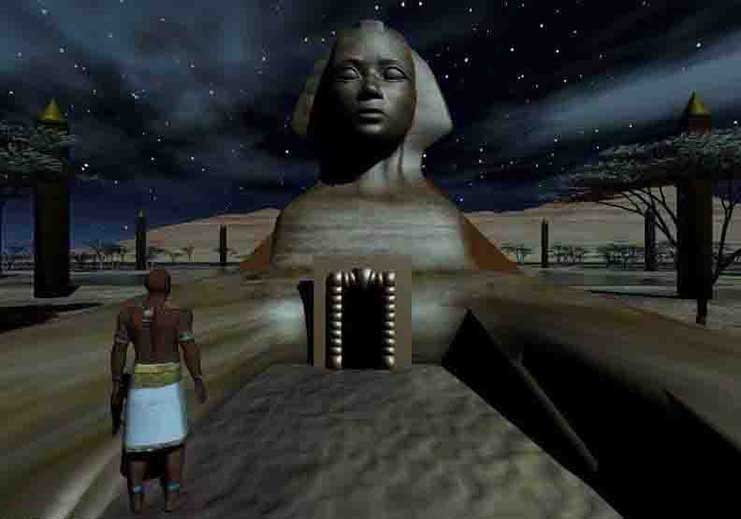
References
Barton, P. (2014 October14). BLACK CIVILIZATIONS OF ANCIENT AMERICA (MUU-LAN),MEXICO (XI). Race and history. https://www.ayanetwork.com/aya/aya20089/csh/RaceandHistory%20African%20presence%20in%20America%20before%201500.pdf
De Saint Perier, L. (2023, February 18). Cheikh Anta Diop, the man who gave the pharaohs back to Africa. The Africa report. https://www.theafricareport.com/282654/cheikh-anta-diop-the-man-who-gave-the-pharaohs-back-to-africa/
Ditshego, S. (2020, March 10). Evolution: Monogenetic Theory, Polygenesis and Distortion of World History. Africa Executive. https://africanexecutive.com/article/read/10503
ELBey, A. (Year, Month Day). United WashitawDe
Dugdahoundyah Muur Nation;The OuachitaSagamuurs of the First Nation; The Royal House of Tunica. Royal House 777.Name. https://www.dralimelbey.com/the-official-united-washitaw-de-dugdahmoundyah-muur-nation-history.html
ENCYCLOPEDIA.COM. (2019). Egyptian Mystery Schools.. https://www.encyclopedia.com/science/encyclopedias-almanacs-transcripts-and-maps/egyptian-mystery-schools
ENCYCLOPEDIA.COM. (2018. May 21).Imhotep. https://www.encyclopedia.com/people/history/historians-european-biographies/imhotep
Fagan, B. (2023, October 23). A Brief History of Archaeology: Classical Times to the twenty-first century. Ahmadu Bello University. https://institutes.abu.edu.ng/idr/public/assets/docs/A%20Brief%20History%20of%20Archaeology_%20Classical%20Times%20to%20the%20Twenty-First%20Century%20(%20PDFDrive%20).pdf
Illingworth, J. (2024, June 18). Newspaper Account of a Meeting between Black Religious Leaders and Union Military Authorities. Freedmen and Southern Society Project. https://www.freedmen.umd.edu/savmtg.htm
James, G. (2009). Stolen Legacy: Greek Philosophy is
Stolen Egyptian Philosophy. The Journal of Pan African Studies https://jpanafrican.org/ebooks/eBook%20Stolen%20Legacy.pdf
Joeland7. (, 2010, February 26). Black is beautiful. Wordpress. https://yeyeolade.wordpress.com/category/the-ancient-elamites-were-black/
Jones, KJ. (2024). The Origin Of Man. BREAKING CHAINS - AT LAW- MINISTRY. https://www.breakingchainsministry.net/The-Origin-Of-Man.php
Nittle, N.K. (2024, January 3). The Short‑Lived Promise of ’40 Acres and a Mule’. History. https://www.history.com/news/40-acres-mule-promise
Rvybey Publications. (2024, September 3). The forgotten Scrolls. http://rvbeypublications.com/id72.html
Smithsonian. (2024, January 3). What does it mean to be human.. https://humanorigins.si.edu/evidence/human-fossils/species/australopithecus-afarensis
Tau, M. (2024, October 25). Albinism And Whiteness – The Origin Of The Caucasian. Grandmother. https://grandmotherafrica.com/albinism-and-whiteness-the-origin-of-the-caucasian/
Thompson, J, S. (2024). Restoring Melchizedek Priesthood. Interpreter. https://journal.interpreterfoundation.org/restoring-melchizedek-priesthood/
United Nations. (2023). Universal Declaration of Human Rights. https://www.un.org/en/about-us/universal-declaration-of-human-rights
shaunteaches. (2010, July 8). $100 in 1863. YouTube. https://www.youtube.com/watch?v=CsC8aFvaQMA
REALHISTORY. (Year, Month Day). The first modern Humans in Europe. https://realhistoryww.com/world_history/ancient/Misc/Prehistoric_Art/Grimaldi.htm
Welke, B. (2017). The History of Our Tribe:Hominini. ebook. https://uilis.usk.ac.id/oer/files/original/61e0ff6681b203c09da1c0ceec9f72c4.pdf
© Copyright BREAKING CHAINS MINISTRY